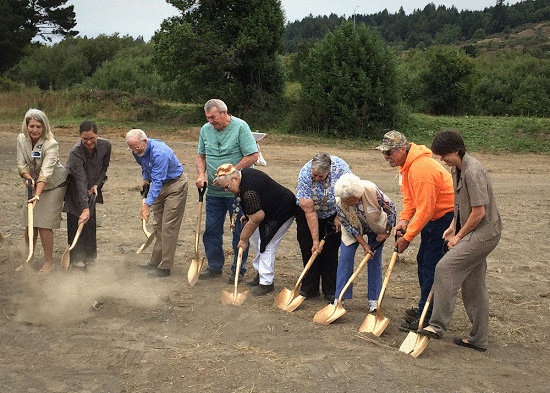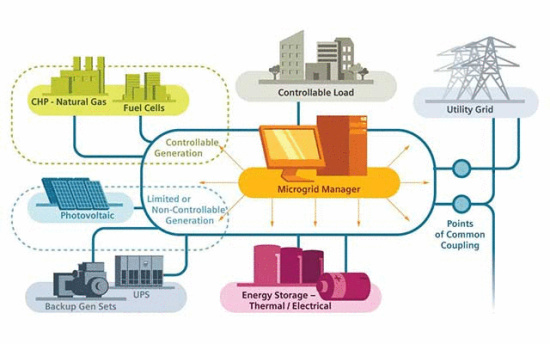Breaking ground on the Blue Lake microgrid. Photo: California Energy Commission, which is helping fund the project with a $5 million grant.
Earlier this week, the Blue Lake Rancheria broke ground on a new power facility that will include, among other things, the Humboldt County’s largest solar array, capable of generating up to a half a megawatt of juice.
Pretty neat in itself, but the continued drumbeat of stories from energy industry press finally cottoned us to the fact that the project is more innovative, and in more interesting ways, than your average supersized collection of photovoltaic panels. It’s what the power wonks call a “microgrid” – a network connected to the main electrical power system, but capable of isolating (or “islanding”) itself when the grid is experiencing difficulties.
The consensus seems to be that this is the wave of the future – as in so many other areas, the trend in energy delivery is toward decentralization. In an overview of the technology last year, the website GreenBiz ran down the advantages of microgrids over (or in conjunction with) the traditional, large-scale power network: easier adoption of new, cheaper renewable energy technology; easier buildout in remote areas; and greater resilience in the face of terrorist attacks or natural disasters. In a report on Blue Lake’s project this morning, GreenBiz mentions that customers of a few East Coast microgrids were the only people to stay powered up during Hurricane Sandy in 2012.
Siemens ‘microgrid’ schematic.
The same story notes that this will be the first commercial project that uses a new “smart” microgrid system designed by the German industrial giant Siemens, which is working with the rancheria and Humboldt State’s Schatz Energy Lab to build it. The Siemens system pulls in weather forecasts, among other data, to estimate how much power customers will require at any given moment. It then orchestrates the various parts of the system – not only the solar panel array but a biomass generator, backup diesel generators and a huge battery installation capable of storing up to 1 megawatt-hour of electricity – to deliver that energy in conjunction with the traditional electrical grid.
Blue Lake’s system is expected to be up and running next year, and when it’s done it’s expected to provide half the total energy used by the Blue Lake Casino and various other tribal offices, from renewable sources.
[Disclosure: The Blue Lake Rancheria is a minority shareholder of Lost Coast Communications, the Outpost’s parent company.]


CLICK TO MANAGE